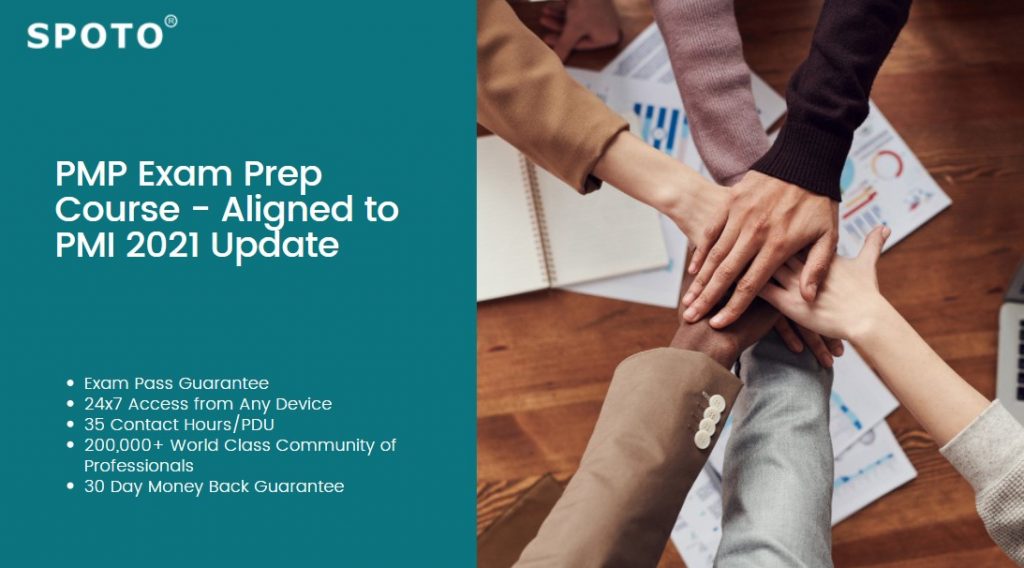Project managers are in high demand all over the world. A globally recognized project management certification demonstrates to employers that you have the knowledge, experience, and education to effectively contribute to a project’s success.
One of the most important industry-recognized certifications for project managers is the Project Management Institute’s (PMI)® Project Management Professional (PMP)® credential.
PMI® is the world’s largest non-profit professional membership organization for project, program, and portfolio management professionals. PMI®, founded in 1969, provides value to over 2.9 million professionals working in nearly every country around the world through global advocacy, collaboration, education, and research.
We will look at the history and evolution of the PMP® Certification in this article.
The Project Management Professional (PMP)® credential, which is globally recognized and in high demand, demonstrates to employers, clients, and colleagues that you have project management knowledge, experience, and the skills to successfully complete projects. Year after year, the PMP credential has gained global recognition and earned certified individuals higher salaries than non-certified individuals.
The PMP® Certification’s History
It all started with the ESA report, which was published in PMQ in August 1983. (Project Management Quarterly -now known as the Project Management Journal). ESA is an acronym that stands for Project Management Ethics, Standards, and Accreditation.
The ESA report discussed a Code of Ethics for project management, a framework for the unique body of project management knowledge—critical to the recognition of the project management profession—and the development of minimum entry standards for the field. Overall, the work of the ESA Project presented in the ESA Report proved to be a significant advancement in the field of project management as it evolved into a project management profession.
The report articulated an important concept. It was recognized that the project management body of knowledge (now known as the PMBOK® Guide) would constantly evolve as the theory and practice of the field were defined and refined.
The fundamental concepts of PM’s content and character were identified. Human Resources Management, Cost Management, Time Management, Communication Management, Scope Management, and Quality Management were identified as knowledge areas.
PMP® Accreditation
The Certification Committee’s first report, chaired by M. Dean Martin, was published in the December 1983 issue of PMQ (Project Management Quarterly- now known as the Project Management Journal). It stated that “some type of certification program” was preferred by 86 percent of PMI® members polled. “The Project Management Professional (PMP)® Program: Certifying Project Managers,” a detailed report, was published in the March 1984 PMJ. It outlined the certification process and identified the three areas where points could be earned toward certification: education, experience, and service.
Since then, it has become the de-facto standard for Project Management certifications. The International Organization for Standardization awarded it the ANSI/ISO/IEC 17024 accreditation in 2007. (ISO).
Candidates must first demonstrate that they have met the required education and experience requirements in order to obtain a PMI® credential. Following that, they must pass a multiple-choice examination. Most PMI® credentials require Professional Development Units (PDUs) to be maintained. PDUs can be earned in a variety of ways, including taking classes, attending PMI® global congresses, contributing to professional research, or writing and publishing papers on the subject.
Currently, there are 618,933 active PMP® certified individuals and 272 chartered chapters in 104 countries around the world.

The PMBOK® Guide’s Evolution (Project Management Body of Knowledge)
PMI® published the first edition of the PMBOK® Guide in 1996. PMI® saw the need to create an official document and guide to help the project management profession grow. In 1981, it launched a project to develop the procedures and concepts needed to support the growth of project management as a profession.
In 1983, the ESA Report was published, along with guidelines for the Project Management Professional Certification (the first-ever PMP® certification was awarded in 1984). The special report was further developed and expanded over the years, and “The Project Management Body of Knowledge” was published as a standalone document in 1987. It was an attempt to standardize and document accepted project management information and practices. Finally, in 1996, the PMBOK® Guide (A Guide to the Project Management Body of Knowledge) was published to supersede the previous documents after extensive consultation and revision. This was referred to as the PMBOK® Guide – First Edition.
The PMBOK® Guide’s second edition was released in 2000. The new edition includes new materials that reflect the evolution of the project management profession. It aimed to include standard project management know-how and practices that were useful and valuable to the majority of projects.
In 2004, the third edition of the PMBOK® Guide was released. One significant change in this edition of the PMBOK® Guide was to evaluate project management practices based on what was “generally recognized as good practice on most projects most of the time.” This essentially means that the project management practices outlined in the PMBOK® Guide would be applicable to the vast majority of projects.
The fourth edition of the PMBOK® Guide was released in 2009, five years after the third edition. The goal of this edition was to make the PMBOK® Guide’s contents more consistent and accessible. The well-known “triple constraints” for project management were expanded to six: scope, quality, schedule, budget, resources, and risk.
The Fifth Edition of the PMBOK® Guide was published in 2013. This edition attempts to incorporate advancements in project management, specifically rolling wave planning and adaptive lifecycle, into its contents.
In 2015, the PMP® Exam will undergo changes.
A recently completed Role Delineation Study (RDS) provided an updated description of the role of the project management professional. A large-scale survey of global Project Management Professional (PMP)® certification holders was conducted as part of the research to validate updates to domains, tasks, knowledge, and skills.
The five domains of practice for the PMP® remain unchanged. Tasks within each domain, on the other hand, have been modified, added, or removed.
The new PMP® Exam Content Outline is undergoing revisions. The percentage of questions from each domain that will be included in the exam has yet to be determined. Furthermore, the knowledge and skills associated with each of these domains and tasks are excluded. This data will be made available no later than June 15, 2015.
Summary
Since PMI® launched its first-ever PMP certification program in 1984, the Project Management profession has come a long way. Today, with a critical shortage of skilled project managers, practitioners with the PMP® credential are well-positioned to provide the professional skills required to lead project teams and achieve successful project outcomes. The PMP® certification recognizes an individual’s ability to perform as a project manager, specifically experience leading and directing projects. The PMI® global community of 490,000+ and growing certification holders demonstrates that PMP® is a world-class certification program that has evolved to stay relevant in a changing world.





